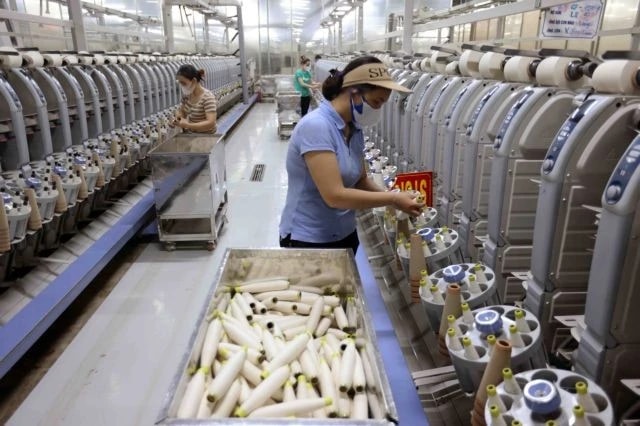Textile stocks look positive amid global supply chain shifts
Vietnam’s position as the world's second-largest textile exporter, trailing only China, underscores its significance in the global market.

Vietnam’s textile and garment sector is experiencing a significant upswing, driven by favourable global dynamics and robust export performance.
Recent statements from the US President Donald Trump, suggesting a shift in American industrial focus away from traditional manufacturing, have been interpreted by investors as an opportunity for Vietnam to expand its role in global apparel supply chains.
Speaking in New Jersey, Trump emphasised that the US should concentrate on advanced industries such as artificial intelligence and military equipment, rather than traditional manufacturing like apparel.
This perspective has been perceived as an indication that the US may further outsource textile production, benefiting countries like Vietnam.
The Vietnamese stock market responded positively to these developments.
On May 26, shares of several textile companies, including Vinatex (VGT), TNG Investment and Trading JSC (TNG), Hòa Thọ Textile & Garment JSC (HTG), Thanh Cong Textile Garment Investment Trading JSC (TCM), Song Hong Garment (MSH) and GIlimex (GIL), hit their daily biggest gains.
The momentum continued into the following day, with HTG maintaining its upper limit and other stocks like TNG, VGT and TCM posting gains exceeding 6%. This surge reflects renewed investor confidence in the sector's growth prospects
Vietnam’s position as the world's second-largest textile exporter, trailing only China, underscores its significance in the global market.
According to the Department of Vietnam Customs, the country's textile and garment exports reached 8.69 billion USD in the first quarter of 2025, with the US accounting for 43.6% of this figure.
April saw a 15% year-over-year increase, totalling 3.64 billion USD.
Several factors contribute to this positive outlook.
Major US retailers are reportedly facing low inventory levels, particularly for fall and winter apparel, with stock sufficient for only six to eight weeks.
The decline in Chinese market share in Japan and the Republic of Korea may be attributed to increased scrutiny of tax evasion practices by Chinese companies amid ongoing trade negotiations between the US and its trading partners.
Simultaneously, competitors like Bangladesh and Pakistan are grappling with energy shortages and political instability, hindering their production capabilities.
This scenario positions Vietnam as a reliable alternative for international buyers seeking stable supply chains.
Domestic garment production also remains robust, as evidenced by the Industrial Production Index (IIP) and labour indices consistently showing upward trends without any months of contraction since the beginning of this year.
Typically, textile production experiences one or two months of contraction in the first quarter due to seasonal low demand and holidays.
Previously, during the May seminar organised by Vinatex, Dr Le Tien Truong, Chairman of Vinatex's Board of Directors, highlighted the significant opportunities for orders in the textile industry during the first six months of the year, suggesting that this positive trend could extend through the end of the third quarter of 2025.
Truong also said that between now and July 10, the US may introduce temporary countervailing tax policies for Vietnam, pending the outcomes of negotiations between the Ministry of Industry and Trade and the government.
Even though orders in Q3 could remain strong due to low US inventories, Q4 may experience a decline of around 10% due to reduced consumer demand in the US, he added.
Industry experts suggest that the current market conditions could herald a new growth phase for Vietnamese textile stocks.
Technical analyses indicate that these stocks have surpassed medium-term resistance levels, and any supportive international policies or increased order volumes could further propel their ascent.
However, challenges persist. A recent increase in domestic electricity prices, effective from May 10, has raised production costs, particularly affecting yarn manufacturers with narrow profit margins.
Companies must navigate these cost pressures while capitalising on emerging global opportunities.


